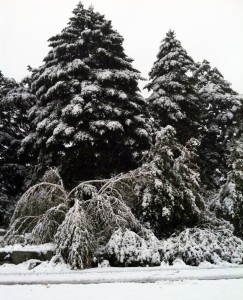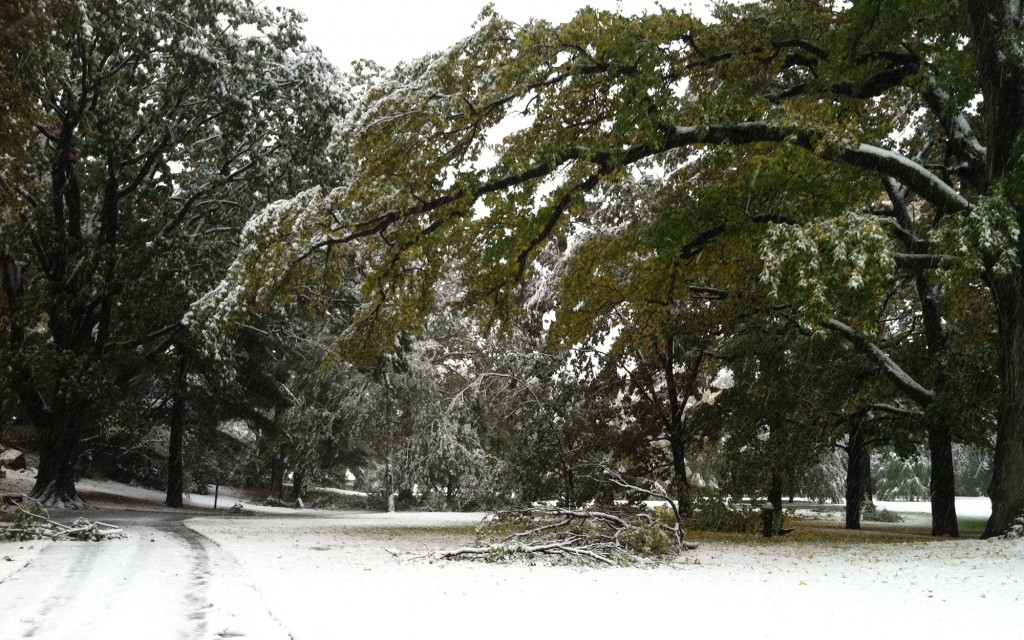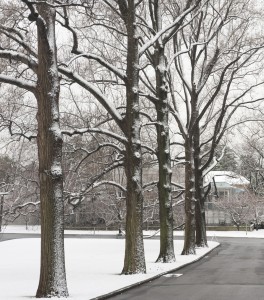Winter Injury
Posted in Gardening Tips, Learning Experiences on January 17 2012, by Sonia Uyterhoeven
 For the past few weeks we have reflected on the strange weather that we experienced last year, discussing the physical damage to the Garden during the October storm and the identifying characteristics that signal future issues. The erratic behavior of the weather from September onwards reminded me of a time several years ago when an Indian summer lasted well into December. The temperatures crashed in the following January and we experienced winter almost overnight.
For the past few weeks we have reflected on the strange weather that we experienced last year, discussing the physical damage to the Garden during the October storm and the identifying characteristics that signal future issues. The erratic behavior of the weather from September onwards reminded me of a time several years ago when an Indian summer lasted well into December. The temperatures crashed in the following January and we experienced winter almost overnight.
Some of you may remember that year. For the broad-leaved evergreens at the Garden, this was the year for winter injury, and there are several reasons why a plant experiences this.
Broad-leaved evergreens will lose water through the process of transpiration when the winter weather warms. If the ground is frozen, the tree can’t take up water and replace it and the foliage desiccates. What happened in the year of the extended Indian summer was slightly different. The plants were not given signals to shut down for the winter, so they did not have the opportunity to harden off. The full extent of the damage is often only visible in the spring.
I had a conversation recently with one of my Garden gurus, Wayne Cahilly, and asked for his thoughts on whether we would experience the same extent of winter injury this spring as we had in that particular year.

He reminded me that soil temperatures are an important factor regulating the process of cold hardening. Low temperatures slow the chemical activity in a plant so that the plant’s metabolism essentially shuts down over the winter months. The regulation of water in plant tissues is vital at this time of year, and the root systems of plants start to shut down once the soil temperature dips into the low 40s.
During the growing season, the vascular systems in plants transport water, nutrients and sugars throughout the plant tissues. In the winter time, plants essentially go into a dormant state, and these functions are slowed down and modified. If water were to remain in the cell tissues during the cold winter months, it would expand when freezing and cause the cell membrane to erupt.
During cold hardening the permeability of the cellular tissues changes, allowing water to seep out into the intercellular spaces. If ice crystals form in these intercellular spaces (as opposed to in the cell) they are not harming the living tissues of the cells. As an alternative line of defense, the protoplasm in the cell also accumulates sugars that act as an anti-freeze.
 While the weather had been yo-yoing throughout December with day time temperatures jumping around between 28F and 50F, the night time temperatures have been slightly more consistent, hovering in the mid 30s to low 40s. Hopefully this should be enough to keep the soil temperatures at a level where plants are receiving the message that winter is upon us and it is time to shut down for the season.
While the weather had been yo-yoing throughout December with day time temperatures jumping around between 28F and 50F, the night time temperatures have been slightly more consistent, hovering in the mid 30s to low 40s. Hopefully this should be enough to keep the soil temperatures at a level where plants are receiving the message that winter is upon us and it is time to shut down for the season.
Now that we understand a little bit about the physiology of the process, we will continue next week in exploring what a homeowner can do to alleviate winter injury.
To be continued…

